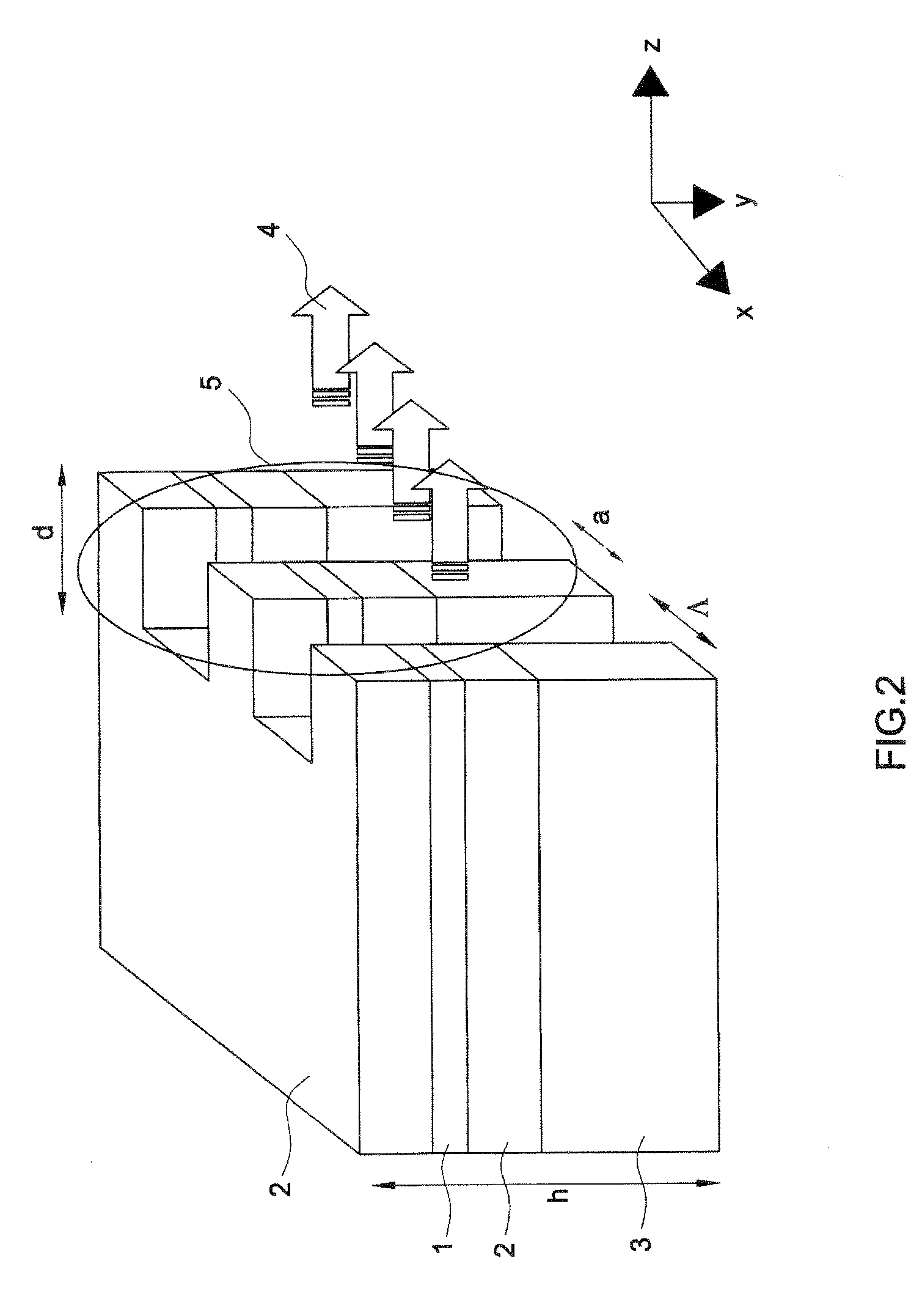Optimized process for fabricating light-emitting devices using artificial materials
a technology of artificial materials and fabrication processes, applied in semiconductor devices, lasers, semiconductor lasers, etc., can solve the problems of complex treatment, inability to obtain suitable refractive index material, and inability to achieve suitable refractive index
- Summary
- Abstract
- Description
- Claims
- Application Information
AI Technical Summary
Benefits of technology
Problems solved by technology
Method used
Image
Examples
Embodiment Construction
[0041]FIG. 1 shows a simplified diagram of the operation of a quantum cascade laser according to the prior art. The cascade laser differs from conventional lasers by the specificity of its active zone 1. This is formed from a number of periods each consisting of several tens of epitaxially grown layers of semiconductor materials (such as, for example, InGaAs, AlInAs, GaAs, AlGaAs or InP).
[0042]When an electric current is injected into this active zone 1, the electrons acquire energy that they restore by the cascade effect, each time in the form of a photon. The engineering of the material (nature of the semiconductor, thickness of the epitaxially grown layers, etc.) determines the emission wavelength of the laser. The waveguides 2 enable the light output by the laser in the form of a beam 4 to be amplified. Moreover, the active zone 1 and the waveguides 2 are grown on any substrate 3 that provides the function of a mechanical support.
[0043]In general, the reflection loss at the outp...
PUM
 Login to View More
Login to View More Abstract
Description
Claims
Application Information
 Login to View More
Login to View More - R&D
- Intellectual Property
- Life Sciences
- Materials
- Tech Scout
- Unparalleled Data Quality
- Higher Quality Content
- 60% Fewer Hallucinations
Browse by: Latest US Patents, China's latest patents, Technical Efficacy Thesaurus, Application Domain, Technology Topic, Popular Technical Reports.
© 2025 PatSnap. All rights reserved.Legal|Privacy policy|Modern Slavery Act Transparency Statement|Sitemap|About US| Contact US: help@patsnap.com



